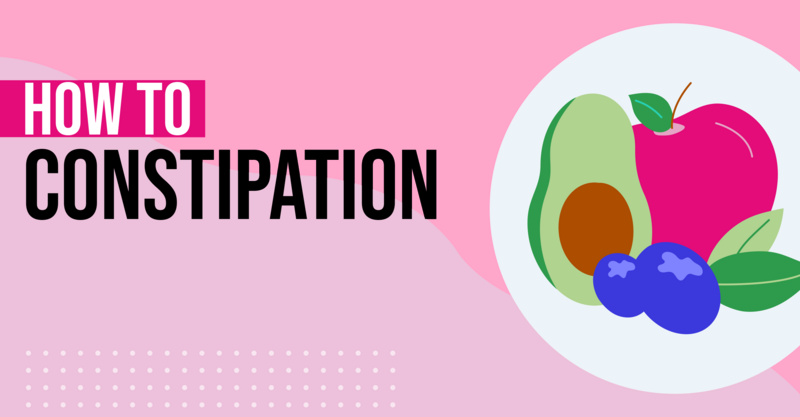Key Points
- The article identifies six common causes of stomach cramps: indigestion, constipation, menstrual cramps, lactose intolerance, food allergies, and food poisoning.
- Indigestion and constipation can be triggered by certain medications, unhealthy lifestyle habits, lack of fiber, dehydration, and low physical activity.
- Menstrual cramps, which can be likened to mild labor pains, are experienced by women during their period, while lactose intolerance causes discomfort after consuming dairy products.
- Food allergies can cause severe reactions and even be life-threatening, while food poisoning results from consuming contaminated food.
- The article also mentions other potential health conditions related to stomach cramps, such as irritable bowel syndrome, Crohn’s disease, pelvic inflammatory disease, endometriosis, appendicitis, and GERD.
Top 6 Causes of Stomach Cramps
1. Indigestion
Also known as dyspepsia, indigestion is a feeling of pain or discomfort in the upper part of the abdomen. Common symptoms of indigestion include bloating, belching, a noisy stomach, nausea, a burning sensation in the stomach, and stomach cramps.[1] Stress and anxiety can worsen symptoms.
Indigestion can indicate the presence of medical conditions such as gallbladder disease, chronic pancreatitis, and thyroid disease. Certain medications, such as antibiotics and oral contraceptives, can trigger indigestion, as can unhealthy lifestyle habits, which might include cigarette smoking and alcohol abuse.[2] Indigestion can be prevented by eating more slowly, reducing caffeine intake, and quitting smoking.
2. Constipation
Constipation occurs when bowel movements become infrequent or are difficult to pass because of hard, dry feces. With constipation, bowel movements occur no more than three times per week.[3] Constipation tends to cause pain and general discomfort, and it is further characterized by symptoms that include nausea, bloating, loss of appetite, stomach cramps, and straining during bowel movements.
Constipation can be caused by a number of different factors, such as lack of fiber in the diet, dehydration, low physical activity, and medications that include opioids and antidepressants.[3] Diseases and medical conditions such as diabetes, multiple sclerosis, and cancer can also cause constipation. People with this condition can find relief by exercising regularly, drinking more water, and consuming more high-fiber foods. In severe cases, laxatives and other medications can reduce symptoms.
3. Menstrual Cramps
Women with menstrual cramps experience dull, throbbing pain in their lower abdomen before and during a menstrual period. When a woman’s egg doesn’t become fertilized, hormones called prostaglandins cause the uterus to contract so it can expel its lining during menstruation.[4] Stomach cramps experienced before and during the menstrual period can sometimes be comparable to mild labor pains.
Common symptoms that accompany menstrual cramps include headache, dizziness, nausea, and loose stools. Women at highest risk for menstrual cramps are those who smoke, bleed heavily during periods, bleed at irregular intervals, or have a family history of menstrual cramps. In some instances, menstrual cramps can be triggered by more serious conditions, including uterine fibroids, pelvic inflammatory disease, or endometriosis.[4]
4. Lactose Intolerance
People with lactose intolerance cannot fully digest a milk sugar called lactose. With lactose intolerance, the small intestine produces low amounts of an enzyme called lactase that breaks down lactose during digestion. A person who is lactose intolerant experiences extreme discomfort and other symptoms after eating milk and dairy — including bloating, gas, and diarrhea. Nausea, vomiting, and stomach cramps are other common symptoms of lactose intolerance.[5]
Lactose intolerance can be caused by genetics or by injury to the small intestine such as that caused by Crohn’s disease and celiac disease. Radiation therapy and certain medications can also contribute to this digestive condition. Those who suffer from lactose intolerance can prevent symptoms by avoiding foods and drinks that contain lactose or by working with a doctor who can treat underlying medical conditions.[6]
5. Food Allergies
When someone has a food allergy, their immune system responds abnormally to a certain food and produces a set of symptoms — some of which can be life-threatening. Many foods can trigger allergic reactions, but the foods most commonly associated with allergies are fish, peanuts, eggs, milk, soy, and wheat.[7] Symptoms of food allergies include hives, rash, eczema, swelling in the mouth, vomiting, diarrhea, stomach cramps, and difficulty breathing.
Risk factors for food allergies include having asthma or at least one other allergy and having a family history of asthma, eczema, or allergies. Allergic reactions to foods may be prevented by avoiding contact with foods you’re allergic to and informing servers at restaurants about your allergies.[7]
6. Food Poisoning
Food poisoning, also known as foodborne illness, is caused by eating foods that have been contaminated with viruses, bacteria, parasites, and dangerous toxins. Symptoms of food poisoning vary depending on the source and severity of the contamination and include nausea, vomiting, fever, painful diarrhea, and severe stomach cramps.[8] Food poisoning symptoms can last anywhere from a few hours to several days depending on the severity of the illness.
Food can become contaminated at any point between its growth and preparation. Chemicals used during the cultivation process can cause contamination, as can poor hygienic habits such as failing to wash hands before handling food. Those at highest risk for food poisoning are those with poor or weakened immune systems, such as infants, older adults, and people with chronic diseases like AIDS and diabetes.[9]
Possible Health Conditions Related to Stomach Cramps
1. Irritable Bowel Syndrome
A disorder in the large intestine that produces symptoms of gas, diarrhea, constipation, nausea, indigestion, and stomach cramps.
2. Crohn’s Disease
An inflammatory bowel disease in the lining of the digestive tract that causes symptoms of vomiting, diarrhea, bloating, and stomach cramps.
3. Pelvic Inflammatory Disease
A condition in which the female reproductive organs become infected, causing symptoms that include pain during urination or sexual intercourse, fatigue, nausea, stomach cramps, and painful menstrual periods.[10]
4. Endometriosis
A condition in females in which tissue on the inside lining of the uterus grows on the outside of the uterus, causing stomach cramps, nausea, constipation, and infertility.
5. Appendicitis
A condition in which the appendix becomes inflamed and filled with fluid, causing fever, chills, loss of appetite, stomach cramps, diarrhea, and vomiting.[11]
6. Gastroesophageal Reflux Disease (GERD)
Also known as acid reflux, GERD is a digestive disease in which stomach acid and bile flow back into the esophagus, causing symptoms of dry cough, belching, nausea, heartburn, and stomach cramps.
Questions Your Doctor May Ask About Stomach Cramps
- When did you start experiencing stomach cramps?
- How often do your stomach cramps occur?
- How long do your stomach cramps last?
- Are your stomach cramps accompanied by any other symptoms?
- Have your stomach cramps become progressively more painful?
- In which part of your abdomen do you experience stomach cramps?
- Are your stomach cramps triggered by factors such as certain foods, stress, or alcohol?
- Does anything effectively relieve your stomach cramps?
- What medications do you currently take?
Stomach Cramps May Also Be Known as
- Stomach pain
- Abdominal cramps
- Abdominal pain
- Stomachache
- Upset stomach
Frequently asked questions
What are the top causes of stomach cramps?
The top causes of stomach cramps are indigestion, constipation, menstrual cramps, lactose intolerance, food allergies, and food poisoning.What lifestyle factors can lead to indigestion and constipation?
Unhealthy lifestyle habits, lack of fiber in the diet, dehydration, and low physical activity can lead to indigestion and constipation.How does lactose intolerance cause stomach cramps?
People with lactose intolerance cannot fully digest lactose, a milk sugar. This leads to discomfort and other symptoms after consuming milk and dairy products.Are food allergies a serious cause of stomach cramps?
Yes, food allergies can cause the immune system to react abnormally to certain foods, producing symptoms that can be life-threatening.What is the cause of food poisoning?
Food poisoning is caused by consuming foods contaminated with harmful organisms such as viruses, bacteria, parasites, and dangerous toxins.What other health conditions could be related to stomach cramps?
Other health conditions that could be related to stomach cramps include irritable bowel syndrome, Crohn’s disease, pelvic inflammatory disease, endometriosis, appendicitis, and gastroesophageal reflux disease (GERD).How are menstrual cramps related to stomach cramps?
Menstrual cramps are experienced by women before and during their menstrual period and can cause pain similar to stomach cramps.Can medications cause indigestion and constipation?
Yes, certain medications can trigger indigestion and constipation.
Solv has strict sourcing guidelines and relies on peer-reviewed studies, academic research institutions, and medical associations. We avoid using tertiary references.









